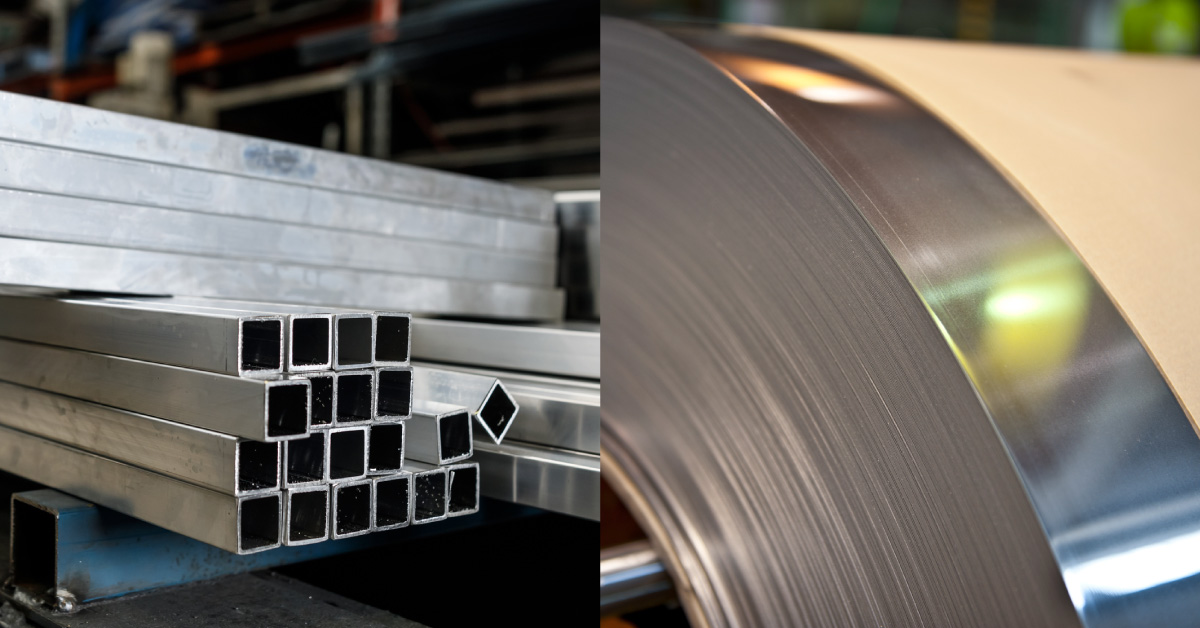Introduction
Metalworking is an old craft that has been practiced for hundreds of years. From the elaborate designs discovered on old jewellery to the towering buildings of leading-edge structure, metalworking has played a essential position in shaping our world. One selected technique that has stood the look at various of time is rolled metallic. In this newsletter, we will be able to delve into the paintings of metalworking and explore the approach of getting to know the craft of rolled steel.
The Art of Metalworking: Mastering the Craft of Rolled Metal
Metalworking is not very just a change, yet an paintings model that calls for capacity, precision, and creativity. The strategy of running with metallic comprises manipulating it through alternative approaches to create lovely and useful gadgets. One such method is rolled metal, which comprises passing a sheet or strip of metallic by using a hard and fast of rollers to obtain a desired shape or thickness.
Understanding Rolled Metal
Rolled metal is a flexible subject matter that is usually used in a broad quantity of packages. It supplies power, longevity, and aesthetic enchantment, making it a well known selection between craftsmen and architects alike. The task of rolling steel involves reducing its thickness by using compressing it among two rotating cylinders or rollers. This consequences in a uniform and tender surface finish that shall be comfortably shaped or shaped.
The History of Rolled Metal
The history of rolled metallic should be traced to come back to ancient occasions whilst early civilizations figured out the benefits of this system. In historic Egypt, to illustrate, rolled gold used to be used to create first rate earrings and intricate embellishes. The Romans additionally made use of rolled metal in their structure projects, the use of it to create domes and arches.
Advantages of Rolled Metal
Rolled metal can provide a number of blessings over different varieties of metalworking techniques. Firstly, it helps for better dimensional accuracy and consistency in thickness compared to casting or forging tricks. This makes it perfect for applications wherein certain measurements are required, corresponding to inside the production of automotive elements or plane method. Additionally, rolled metal might possibly be actual fashioned into elaborate shapes, making it a versatile selection for designers and architects.
Applications of Rolled Metal
Rolled steel finds utility in a large selection of industries and sectors. In the car market, for example, that is used to manufacture physique panels, chassis accessories, and engine parts. In structure, rolled metal is used in the fabrication of structural beams, roofing constituents, and cladding structures. It can also be most likely used inside the production of household appliances, furnishings, and decorative gadgets.
The Process of Rolling Metal
The process of rolling metal comprises several ranges that have got to be carefully achieved to in attaining the favored consequences. The first step is to put together the steel through heating it to a selected temperature known as the recrystallization aspect. This makes the metallic greater malleable and more convenient to paintings with. The heated steel is then exceeded via a series of rollers that steadily reduce its thickness at the same time as conserving its structure.

Tools and Equipment for Rolled Metal
To efficiently roll metal, craftsmen require really good resources and machine. These encompass rolling turbines, which encompass two or extra rollers that rotate in reverse instructional materials to compress the metallic. Other primary resources contain shearing machines https://tonmetholding.com.ua/uk/produkciya-2/c/kalbrovaniy-prokat/ for cutting the metallic into strips or sheets, in addition bending machines for shaping the rolled metallic into a variety of kinds. Additionally, craftsmen may use hammers, anvils, and different hand gear to refine and end their creations.
FAQs
Q: What kinds of metals will be rolled? A: Rolled metal may well be manufactured from a range of metals consisting of metal, aluminum, copper, and brass.
Q: How thick can rolled metal be? A: The thickness of rolled metallic can differ depending on the one of a kind program however customarily ranges from a couple of millimeters to various centimeters.
Q: Can rolled steel be painted or covered? A: Yes, rolled steel will also be unquestionably painted or coated to give a boost to its appearance and defend it from corrosion.
Q: Is rolled steel more high-priced than other types of metalworking innovations? A: The payment of rolled metal relies on various points which includes the kind of metal used, the complexity of the design, and the amount required. In a few instances, rolled metal might possibly be more highly-priced, although in others it is going to present can charge discounts by means of its effectivity and versatility.
Q: Is rolled steel right for outside programs? A: Yes, rolled metal is more often than not utilized in outdoor functions as that is tremendously proof against weathering and corrosion.
Q: Can rolled steel be recycled? A: Yes, rolled steel is relatively recyclable and will likely be melted down and reused to create new items.
Conclusion
The paintings of metalworking encompasses a large fluctuate of approaches, each one requiring capability, creativity, and willpower. Rolled steel is one such process that has stood the try out of time and continues to be a widely wide-spread possibility amongst craftsmen and designers. Its versatility, energy, and aesthetic allure make it a perfect materials for a vast diversity of programs. Whether it's developing problematic jewellery or establishing towering platforms, studying the craft of rolled metallic is not any small feat. With acceptable lessons, journey, and a passion for the art shape, each person can embark on this beneficial journey of studying the craft of rolled metallic.